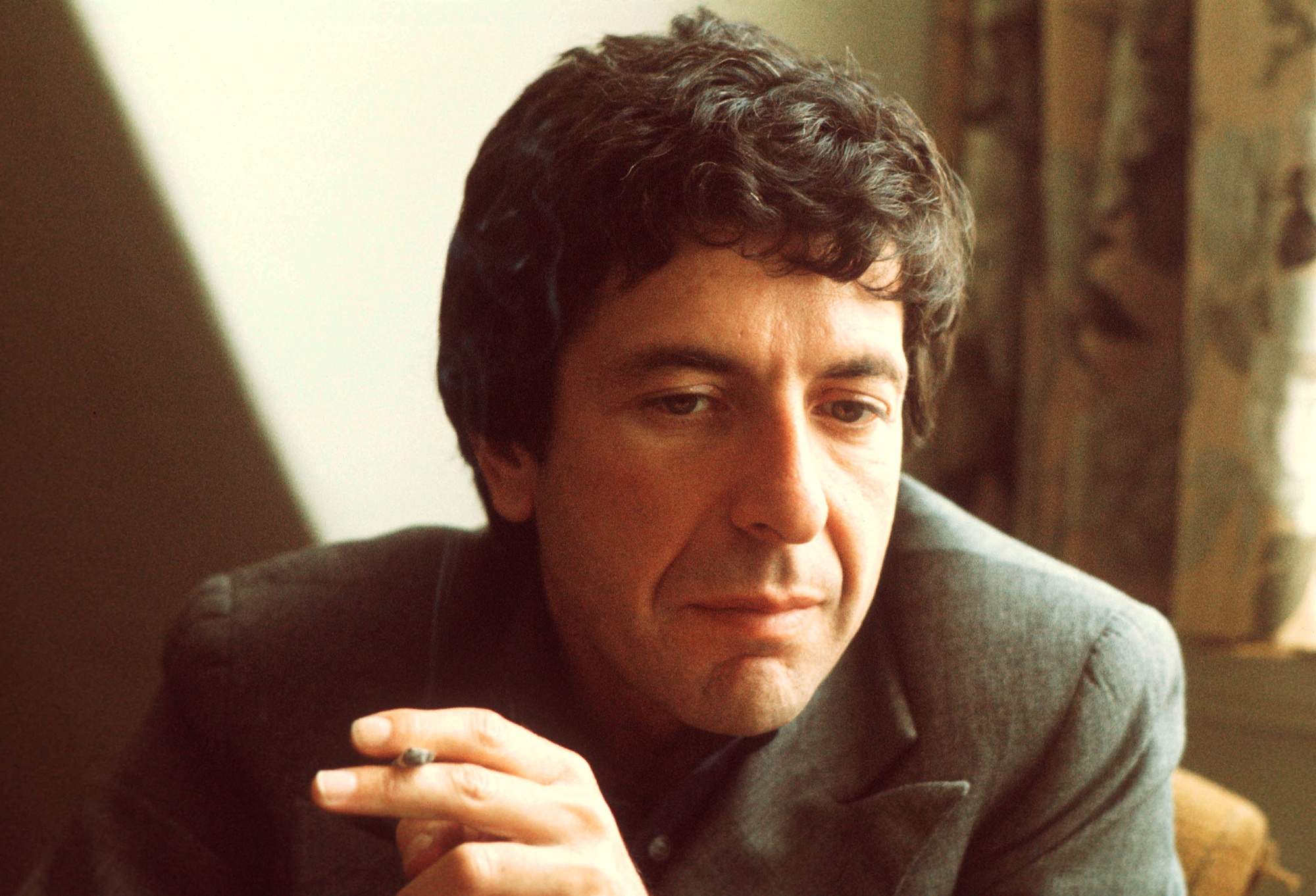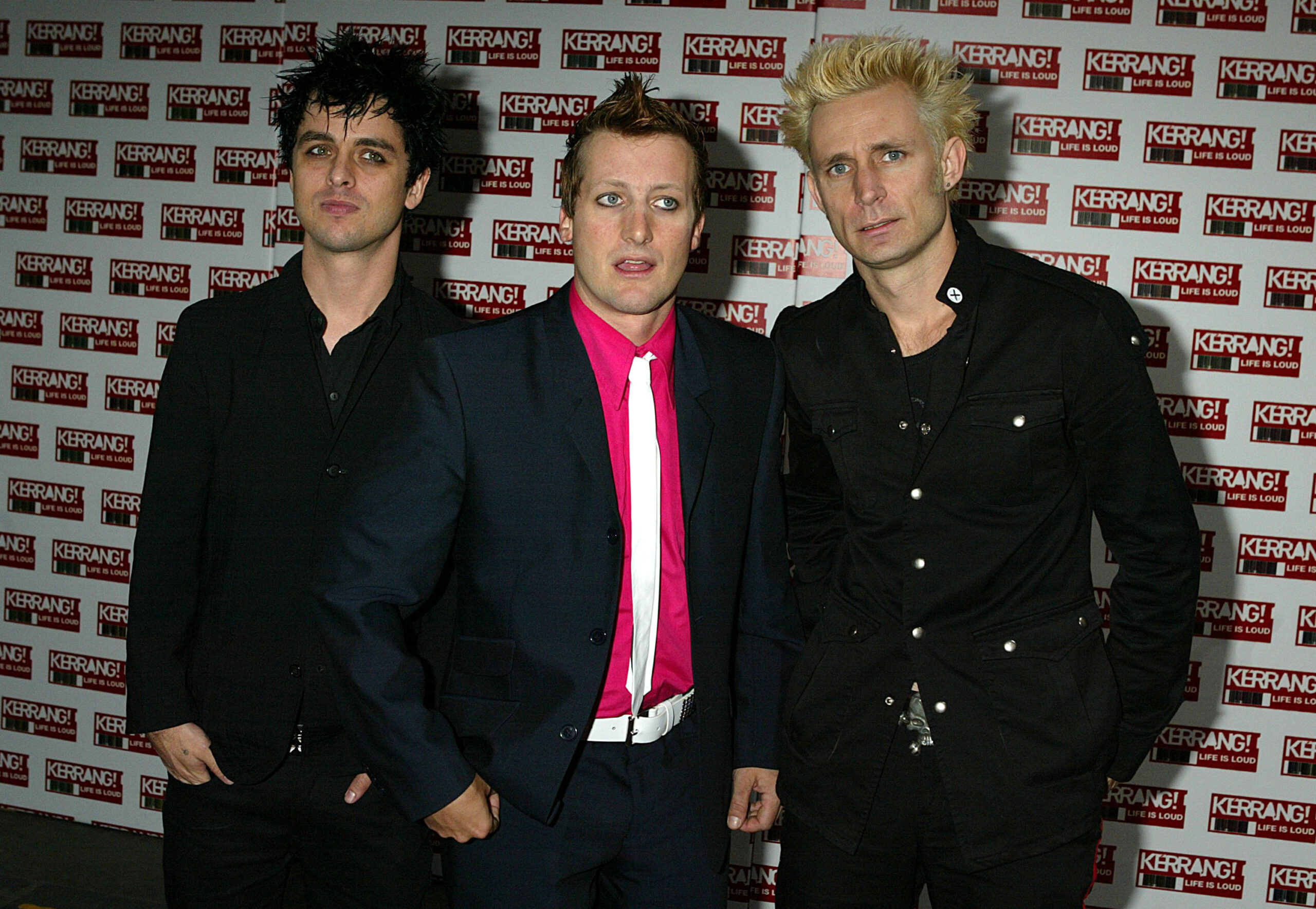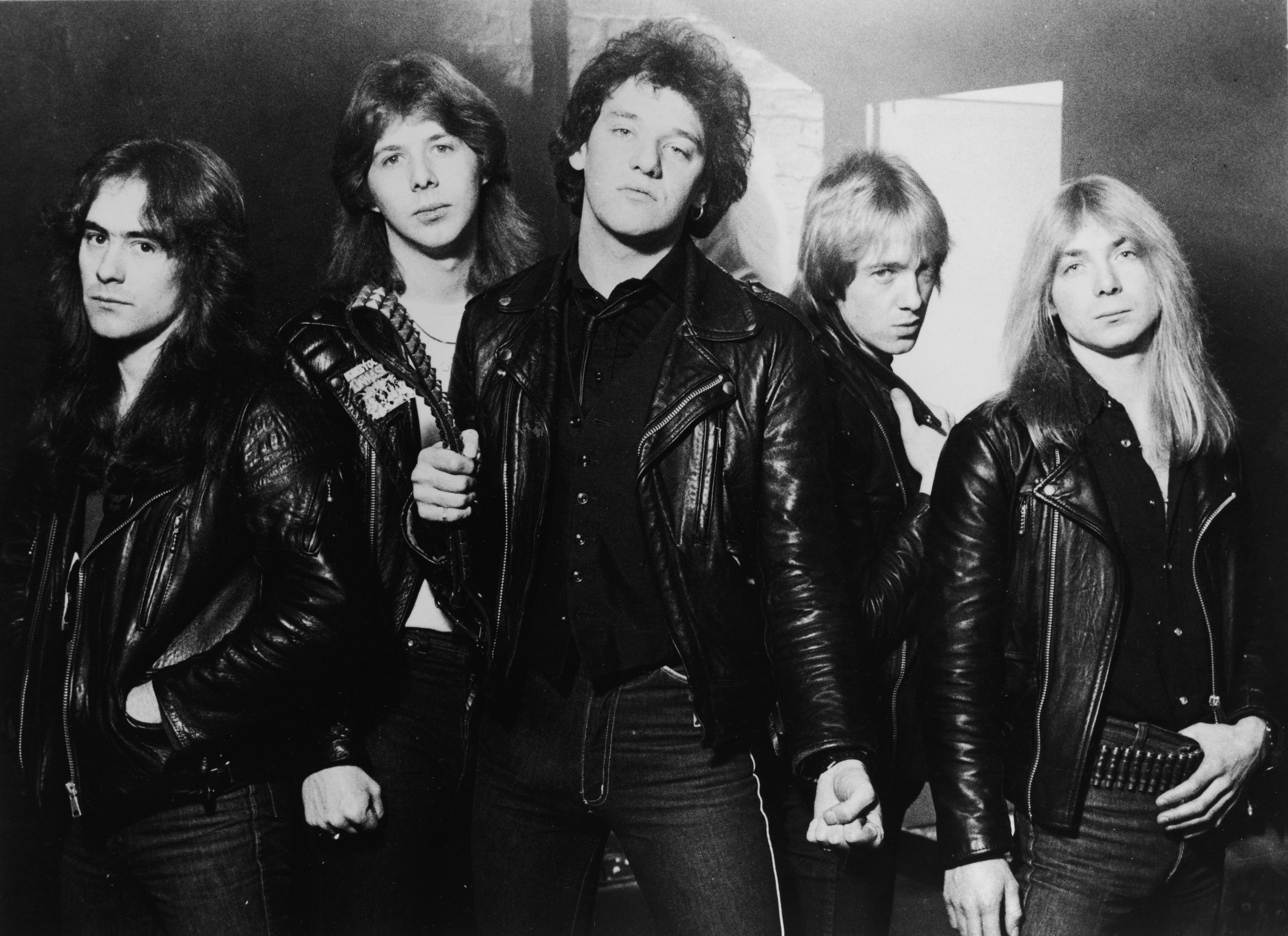Several years ago, The Atlantic published a controversial essay by a healthy, middle-aged oncologist who hoped to die at 75. Among his reasons -- the pain and physical deterioration that accompanies old age, a disinterest in subjecting himself to the modern desperation to extend life at all costs -- was an interesting meditation on the slowing of creativity. The author, Dr. Ezekiel J. Emanuel, suggests "some deep underlying biological determinism" accounting for this decline. "The fact is that by 75," Emanuel argues, "creativity, originality, and productivity are pretty much gone for the vast, vast majority of us."
Leonard Cohen must have never read it. Or he was the ultimate outlier. His late-in-life creative renaissance was largely unparalleled. During the final years of his astounding career -- as he neared and then surpassed the age of 80 -- Cohen published a book of poetry, toured the whole goddamn world (his first such tour since 1993), headlined Coachella, completed his first new album in seven years, toured the world yet again, and then released two more albums of excellent quality just two years apart. And he kept at it until the very end. You Want It Darker, Cohen's final release, a great and moving album that lives up to its title in all sorts of ways, appeared on 10/21. The artist died on 11/7.
It is difficult to conceive of any great songwriter who stared down death, decline, or the dulling of the creative mind with more humor and fury and strength than Leonard Cohen. Like many fans, I keep returning to that New Yorker profile, in which Cohen tells David Remnick, "I am ready to die. I hope it's not too uncomfortable. That's about it for me." Read it again: That's about it for me. As if his body of work were something trivial and small, as if his life and career were just a little blip. (Cohen's unfailing modesty was always a part of his charm.) To the contrary, the songwriter released 14 studio albums of remarkable quality and stylistic range spread across five decades of history. Two of them are indisputable masterpieces, and all of them are worth owning. (Well, maybe except one -- we'll get to that.) And now, as we grapple with a scary world made scarier by a president-elect who'll remain nameless, we will need Leonard Cohen's music as much as ever -- its gloomy solace, its humor and grace in the face of horror, its stark and distinctly Jewish awareness of history and oppression.
One quick note: I wrote this feature, or most of it, in October, during the weeks after Leonard Cohen told The New Yorker that he was ready to die but before his premonition came true. I knew he was grappling with his mortality. I did not know it would come so soon. And I did not plan for this to be published in memoriam. So I have made some small changes -- sadly but inevitably converting verbs from the present to the past tense -- but have otherwise kept it the same. This feature is not a reflection on his death. It is a celebration of his life's work.
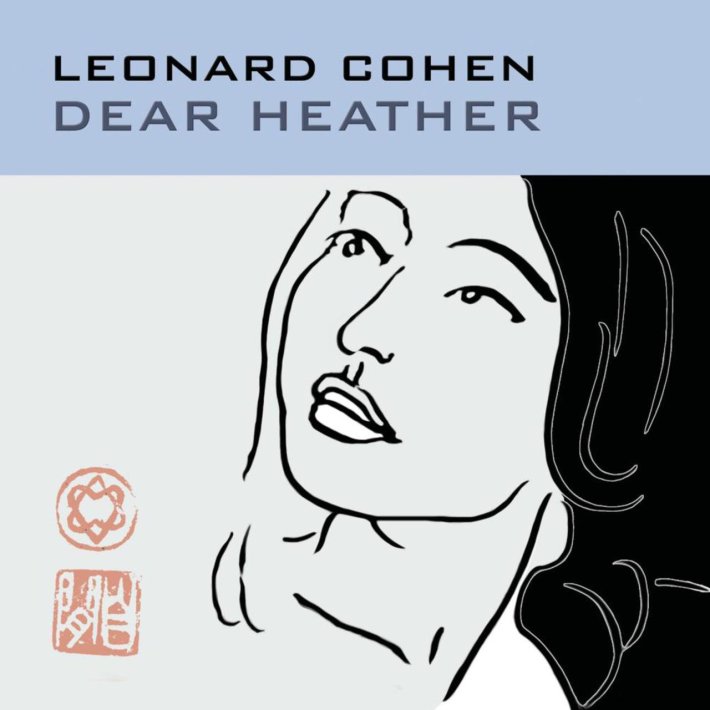
14. Dear Heather (2004)
In 2004, Leonard Cohen made plans to name his new release Old Ideas. He scratched that title before using it for a very different album in 2012, which is perhaps a shame -- it would have been a telling title to attach to Dear Heather, an odd little album that blurs the line between new LP and rarities collection. It's an unusually scattered release, with lingering ties to previous projects. Some ideas are in fact very much old: There are several Ten New Songs rejects, one tepid Recent Songs castaway ("The Faith"), and a performance of a country standard that was recorded live way back in 1985. The song is "Tennessee Waltz," and it's not a particularly great recording, which makes its inclusion here seem like a particularly baffling afterthought.
Cohen never made an outright bad record, but Dear Heather is by far his most disjointed and unsatisfying work. Three tracks here were left aside from Ten New Songs, though only one of them (the darkly funny "The Letters," which reprises the epistolary theme of "Famous Blue Raincoat") is strong enough to have warranted inclusion. "On That Day," an obviously new tune, addresses 9/11 directly, but the song is brief, its reflections feel perfunctory and noncommittal ("Some people say / It's what we deserve"), and any dramatic momentum is felled by the goofy cadence of a Jew's harp. (The instrument makes an irritating reemergence on "Nightingale," a jaunty folk tune based around a melody by the late singer Carl Anderson.)
Now for the good. Dear Heather has an experimental, free-form element that's unique in the Cohen catalog. I'm Your Man and The Future had lots of unorthodox textures, but they were still composed of songs, in the most traditional sense. Dear Heather is different. It contains sketches, spoken monologues, loose interpretations of other artists' work, a hymn. On "To A Teacher" and "Because Of" -- a funny, bizarre verse about women being "exceptionally kind to my old age" -- Cohen recites poetry in a gruff murmur, seemingly oblivious to the homespun accompaniment that flutters around him. "Villanelle For Our Time" is a lovely spoken-word experiment in which Cohen recites a poem by the late Montreal poet F. R. Scott. And the title track, in which our hero obsesses over some woman's white legs in emotionless unison with a female voice, is perhaps the strangest thing he has ever recorded. What's also strange is the antiseptic, muzak-y sheen of these arrangements. Cohen's embrace of synthesizers was not a new development in 2004, but Dear Heather sounds almost comically sterile, like karaoke cassettes that somehow landed in the hands of Canada's poet of darkness. In his "Hallelujah" book, Alan Light quotes a listener who thought Ten New Songs sounded "like a guy in the subway with a keyboard who decided to burn a CD." Dear Heather somehow sounds even tackier, like novelty tunes crossbred with a poetry recital.
Dear Heather was commonly assumed to be Cohen's final album, which almost seems funny now in retrospect. An AllMusic reviewer sensed "an air of finality" in the record and, in a generous review, described it as "a fine, decent, and moving way to close this chapter of the book of his life." Stylus Magazine (RIP) dissented but partook in the same morbid speculation, fearing that the record was "a particularly dour, unsatisfying way to end such an intriguing career." Hearing Dear Heather in the mid-2000s, there was this sense that Cohen was finally slipping, that the old master might now lose his vitality. It was hard to imagine he had much left, song-wise. At the time there really wasn't any precedent for rock- and folk-era singers carrying on past 70, and this seemed a muddled note to go out on.
And we were wrong. So, so wrong. This, perhaps, is Leonard Cohen's greatest gift -- proving us wrong, so many times.
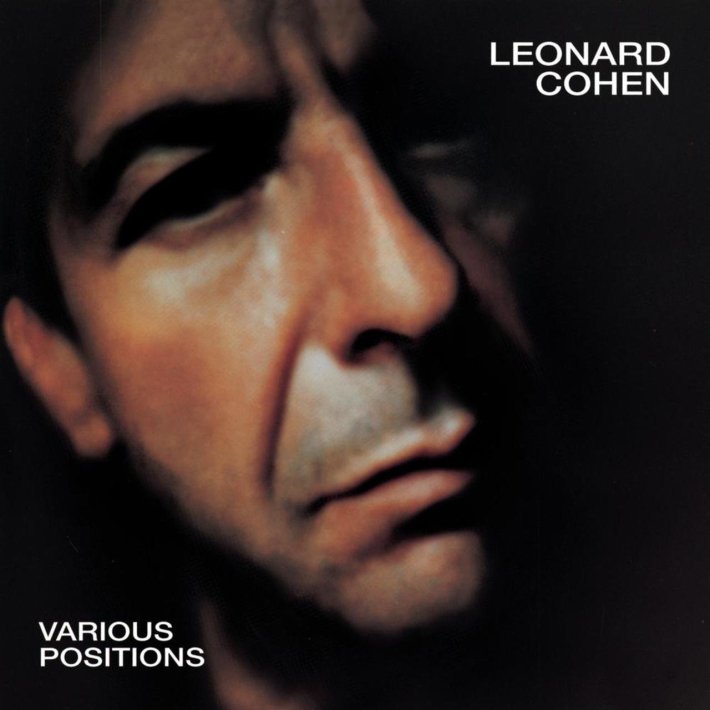
13. Various Positions (1984)
Recorded at the absolute nadir of Cohen's commercial career, Various Positions is best remembered for a song that made virtually no impact in 1984 but became a global phenomenon some 17–20 years after its release. As Saturday Night Live just demonstrated, it remains a phenomenon still today. Of course I'm referring to "Heart With No Companion" -- I kid, I kid -- OK, "Hallelujah." The version recorded here, long before some freakish combination of Shrek and 9/11 immortalized the minor fall and the major lift, sounds tentative, a first draft that drowns the song's stark emotional weight under reverb and studio cheese, which is pretty indicative of its parent album. Various Positions hints at Cohen's remarkable embrace of synth-pop production but doesn't quite commit. The track list features several unassailable classics and an unusually high proportion of forgettable tunes, if not outright filler. (After listening to "The Captain" and "Hunter's Lullaby" dozens of times I can barely recall anything about them.) This is an album that inches toward reinvention but falls into the prototypical transition-album territory. In other words, it is more of a pivotal Leonard Cohen album than a great Leonard Cohen album.
Cohen reunited with erstwhile producer John Lissauer, but the result sounds nothing like New Skin For The Old Ceremony. The jazz flourishes have been supplanted by Cohen's burgeoning interest in synthesizers. The whole thing's soaked in an ocean of reverb, making it immediately dated. The production has that murky mid-'80s quality -- the drums on "Coming Back To You" might as well have been recorded underwater -- while Cohen's voice is just beginning to deepen, a change he half-jokingly attributed to "50,000 cigarettes and several swimming pools of whiskey." Not yet the raspy husk it would become by 1992's The Future, it is markedly lower and heavier than on the early records.
Anyway, enough about "Hallelujah." The song's journey from deep cut to modern spiritual psalm is as mysterious as anything in Cohen's career. Alan Light's book The Holy Or The Broken is a pretty exhaustive chronicle of the song, as well as a fascinating account of the Various Positions sessions. It's a great song, and we could probably all do without ever hearing it again. (Though if you've only known the Rufus Wainwright or Jeff Buckley renditions, Cohen's recording is worth hearing and might make you grimace.) The real gem here is "Dance Me To The End Of Love," a shimmering, Klezmer-flavored standout that finds beauty in the bleak environs of a concentration camp. The song's tinny Casio and primitive drum machine ushered in a whole new musical vocabulary for Cohen, while also spotlighting co-vocalist Jennifer Warnes as an indispensable collaborator. Yet this material evidently didn't move Walter Yetnikoff, president of Columbia Records. The famous story is that Yetnikoff refused to release the album and summoned Cohen to his office to tell him, "Look, we know you're great, but we don't know if you're any good." It was a crushing rejection. Cohen was forced to release Positions on an independent label Stateside, and according to Light's book, Lissauer's production career was basically squashed.
Though he rebounded and had the last laugh with "Hallelujah," Cohen only wound up releasing two albums during the 1980s. Fans might find it odd that I've ranked one of them quite high on this list (spoiler!) while ranking the other so low. But much of Various Positions feels like a dry run for I'm Your Man. It's a lesser work on pretty much every scale -- in production, in songcraft, in vision. "Coming Back To You" is very good but dwarfed by "Ain't No Cure For Love," a bolder, better AOR mid-tempo seduction. "If It Be Your Will" is a strong hymn of devotion and surrender that hardly tops the howl-at-your-beauty-like-a-dog-in-heat creepiness of "I'm Your Man."
There is an alternate universe where "Hallelujah" languished forever in obscurity, where Various Positions was Cohen's final album -- or never released at all -- and he enjoyed a lengthy retirement, his commercial prospects finally dried up; a world where the singer might be about as famous today as, say, Donovan or Jim Croce. I'm glad we do not live in that world. The producers of Shrek are glad we do not live in that world. And the two albums that followed Various Positions are reason enough to be glad we don't live in that world.
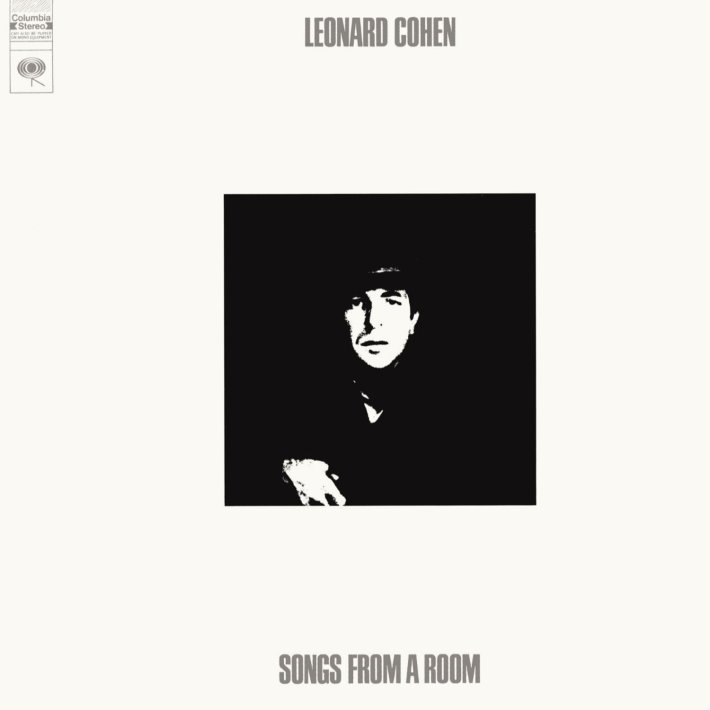
12. Songs From A Room (1969)
The sophomore slump. It's not bad, just...not nearly as good as the debut. Songs From A Room is a decent enough album that has the misfortune of falling squarely between Cohen's great 1967 debut and his wrenching 1971 masterpiece. It is the least distinctive of Cohen's early, folkie records, with an odd, austere vibe that spotlights stories about revolutionaries and biblical parables rather than the singer's more romantic obsessions.
Cohen had a longstanding interest in country music, so after an aborted session with David Cosby, he decamped to a farm outside of Nashville and hired Bob Johnston (Blonde On Blonde; Sounds Of Silence) to be his producer. There is a slight country feel to recordings like "The Old Revolution" and "Tonight Will Be Fine," with their jaunty tempos and root-fifth bass lines, though Cohen never commits to the stylistic guise as wholeheartedly as he would later try on doo-wop and synth-pop. Johnston's arrangements are sparse but not spartan; one of his less successful experiments was incorporating a Jew's harp that serves little melodic purpose beyond buzzing in the background.
Qualms aside, Cohen has always had a knack for choosing unimpeachable opening tracks -- "Suzanne," "Dance Me To The End Of Love," "The Future" -- and so this record begins with one of the pillars of his early songbook, "Bird On A Wire," a live staple that packs maximal emotion into minimal imagery. Cohen famously wrote the track after seeing a bird on a phone wire when he was living on the Greek island of Hydra. It's hard to top that, and Songs From A Room never quite does, though there are definite gems like "The Partisan" (an eerie interpretation of a French song about the World War II resistance movement), "The Butcher" (biblical imagery side-by-side with heroin), and "Seems So Long Ago, Nancy" (a tribute to a disturbed young acquaintance who committed suicide a few years prior). If young-folkie Leonard Cohen is your favorite Leonard Cohen, don't skip the album.
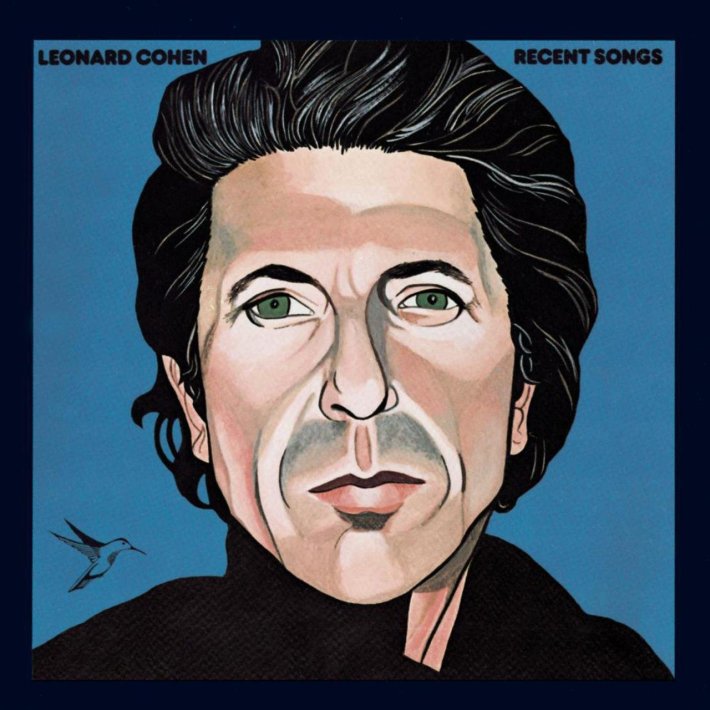
11. Recent Songs (1979)
On the cover of Recent Songs is a portrait of Cohen by the artist Dianne V. Lawrence. He's depicted gazing toward the viewer with a blank, focused expression. Cohen was no longer a young man, as evidenced by the jowls around his cheeks and streaks of gray in his hair (he'd turned 45 a week before Recent Songs appeared). There is a hummingbird above his right shoulder -- the same bird that would reappear on the cover of The Future 13 years later, a symbol of happiness and endurance.
The album cover projects a sense of calm. It's a much more stately, settled scene than the erotic imagery that adorns New Skin or the hints of debauchery in Death Of A Ladies' Man's sleeve art, which is about right: Recent Songs is something of a return to normalcy. After a period of instability and wild stylistic diversions, this sixth album returned the songwriter to the more traditional folk terrain of his early releases -- with somewhat less consistent songwriting.
If not Cohen's most provocative collection, Recent Songs is one of his most confident and surefooted, and it came as a relief to fans alienated by his mid-'70s dive into decadence. For any fan, there is plenty to love here -- "The Gypsy's Wife" is a minor classic, a bible-referencing lament for Cohen's would-be wife Suzanne Elrod, while "The Smokey Life" is positively gorgeous, with wistful lyrics about letting go of a spent love and two-part harmonies that foreshadow "Dance Me To The End Of Love." New Skin producer John Lissauer gets a writing credit on "Came So Far For Beauty," a strong holdover from the scrapped Songs For Rebecca project, while Lissauer's jazzy influence persists on "Our Lady Of Solitude" (one of several tracks spotlighting the jazz-rock group Passenger) and the Mariachi-flavored "The Lost Canadian (Un Canadien Errant)." Yet the intensity that drives Cohen's best work is missing from lengthy and meandering narrative-driven tracks like "The Traitor" and "Ballad Of The Absent Mare."
Recent Songs stands as one of the more conservative moves in a career that has otherwise dazzled with sharp left turns. Few Cohen fans will single it out as the man's greatest work, but just as few will doubt that it has some real gems. Yet the album feels like the end of something, and not just because it came at the tail end of the '70s, Cohen's most prolific decade. It marks the final record of his early period, the final record that takes gypsy folk -- acoustic guitar, subdued arrangements, a sparse rhythm section -- as its backdrop, the final record that featured the gift of his golden voice before its slow evolution into a Tom Waits-ian half-grunt. Lyrically, too, Cohen is concerned with farewells and endings, particularly of the romantic sort: "So set your restless heart at ease / Take a lesson from these autumn leaves," he sings on "The Smokey Life"; "they waste no time waiting for the snow." And the snow came for Cohen, too. He was deeply unfashionable during the punk era. Cohen endured some years of wilderness, a humiliating rejection -- followed by what would be the greatest comeback of his career.
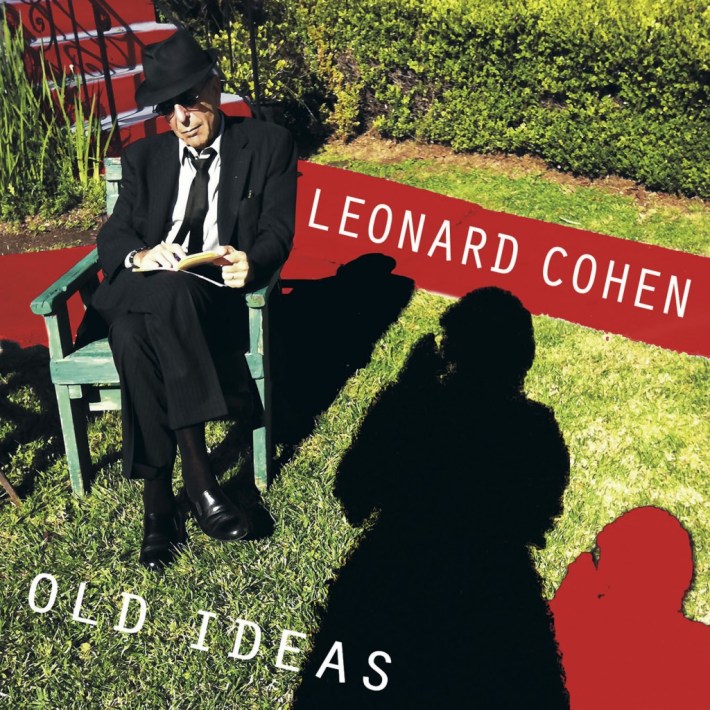
10. Old Ideas (2012)
Nobody expected this -- perhaps not even Cohen. As he reached his mid-70s, the old folksinger made a startling return to creative life. He toured for the first time in 15 years, singing and tipping his fedora to adoring crowds around the world throughout much of 2008 and 2009. The development was at least partly motivated by money: Cohen discovered several years earlier that he had been defrauded out of millions in retirement savings by his longtime manager, and plotted a tour to regain financial solvency. But after the tour, instead of enjoying his renewed retirement funds with, well, retirement, Cohen immediately went to work on his 12th album. And when the album finally emerged, it ushered in a new prolific period for the aging master.
Old Ideas arrived at the beginning of 2012, seven years after Dear Heather, and in some ways it sounds as if that 2004 album never happened. The karaoke synths and spoken-word monologues are discarded. Ideas is the most acoustic and organic-sounding Cohen album in decades. He'd begun playing guitar again after so many albums of drum machines and synths, as evidenced by bluesy, stripped-down tracks like "Darkness" (which Cohen debuted during that preceding tour), "Banjo," and "Crazy To Love You." I suppose you could argue this is the closest thing to a folk album Cohen had made in 33 years, though Old Ideas is an album of quiet renewal and reflection, full of inspired production quirks courtesy of Patrick Leonard (check those shimmering funk organs on "Different Sides"). On the vocal side, Cohen shows off a gruff, talk-singing style that's midway between the Dear Heather spoken-word stuff and The Future -- it sounds like an old man in your bible-study group trying to learn to rap.
And it is a funny, playful album, too. Cohen carried a reputation for being gloomy and depressing -- Leon Wieseltier famously declared him "The Prince Of Bummers" -- but he rarely gets credit for how funny he really was. This is a guy who once rounded up Bob Dylan for a session only to relegate him to distant background vocals on a song called "Don't Go Home With Your Hard-on." Old Ideas is suffused with the artist's dry wit. Even the album art is funny as hell: a photograph of Cohen seated in a lawn chair, decked out in a suit and sunglasses, looking vampiric and totally miserable. On "Anyhow," he's reaching out to an estranged lover with a self-deprecating plea: "I know you have to hate me / But could you hate me less?" And on "Going Home," the sardonic opener, he mocks himself and his slowed creative output from the perspective of an unnamed authority figure -- perhaps God: "I love to speak with Leonard / He's a sportsman and a shepherd / He's a lazy bastard living in a suit." Except hardly lazy. Old Ideas would be the first of three new records in five years, a remarkable late-career renaissance that kept Cohen creatively active right up to his final months.

9. Popular Problems (2014)
Here's the step-by-step guide for reviewing a late-career Leonard Cohen album. 1) Mention the artist's advanced age. Popular Problems was released on the eve of Cohen's 80th birthday, so this was made certain. 2) Assume that this is his final offering. (Until this year's You Want It Darker, this assumption was always incorrect.) Use phrases like "air of finality" and "sense of encroaching mortality." 3) Scour the lyrics for references to death and dying. On Popular Problems, you don't have to look hard. On the terrifying "Almost Like The Blues," he quips: "I have to die a little / Between each murderous thought / And when I'm finished thinking / I have to die a lot." And on "Samson In New Orleans" -- a tedious ballad and the album's only wasted moment -- he declares himself "blind with death and anger." 4) Use the word "autumnal" at least once.
As Steven Hyden argued just a month ago, critics have been prematurely burying Cohen since long before he actually died, neglecting the fact that he has honest-to-God made more great albums this decade than Kanye West. When our greatest songwriters grow elderly and gray, we write them off, failing to imagine that they have anything new to say unless it's "farewell." Yet Cohen was surprising and challenging us up until the end. Released just two-and-a-half years after Old Ideas -- the songwriter had not put out records with such frequency since the Carter Administration -- Popular Problems shakes with a late-career urgency that's inspired and rare. It's a terse, excellent little album that's home to some of Cohen's sharpest one-liners and most unusual arrangements (check out "Nevermind," with its thumping beat and guest appearance by the kirtan singer Donna DeLory). Producer Patrick Leonard, known for his work with Madonna, devised some surprising instrumental backdrops for Cohen's raspy and rap-like delivery, from the menacing bass rumble of "Almost Like The Blues" to the skeletal groove of "Slow."
The paradox is that Cohen was speeding up his output by such an urgent degree, yet the track list reflects his habit of taking years, even decades, to perfect a single song. "My methods are obscure and not to be replicated," he told an audience around the time. "A song will yield itself if you stick with it long enough." ("Hallelujah" notably remained a work in progress for Cohen even after he released it.) "Born In Chains," a musical telling of the Exodus story that overlays Cohen's spoken vocals with those of his backup singers, was in progress as early as the late 1980s. "Nevermind" was published as a poem in the 2006 collection Book Of Longing. And "A Street," the album's most mysterious and masterful verse, originated shortly after 9/11 yet took years to nail down. It is funny and grim, wistful but not nostalgic, obsessed with the past but not beholden to it -- like so much of the man's work itself.
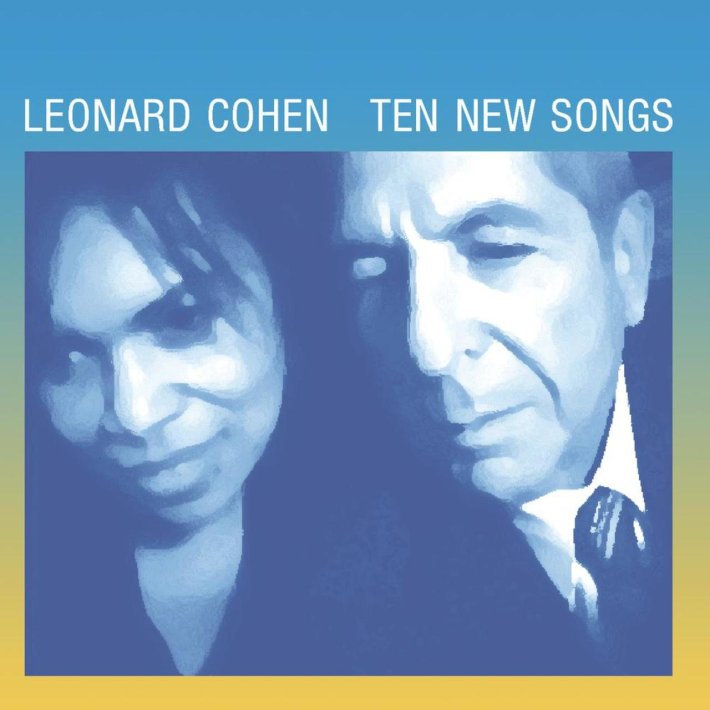
8. Ten New Songs (2001)
Leonard Cohen was terrible at album titles. Just hilariously bad. It's the first thing a new listener will notice about his discography. The titles frequently contain the word "songs" and often just seem to state the obvious: Songs Of Leonard Cohen, Songs From A Room, Recent Songs. Later, he intended to name his 2004 release Old Ideas but was talked out of it for fear that fans would confuse it with a best-of compilation. Never one to let a weak album title go to waste, Cohen pocketed the phrase and used it for his 2012 album.
But Ten New Songs -- the name of Cohen's 10th collection -- is not as thuddingly obvious a title as it seems. There's even something slyly revelatory about it: By the time the album appeared, during the fraught fall of 2001, Cohen fans weren't expecting to get any new songs from the man, much less 10 of them. As Pitchfork's Brian Howe wrote in 2004, witnessing Cohen's mysterious return was "like discovering a long-deceased relative sitting in the parlor and patting their lap for you to come sit as if they'd never left."
The fact that the new songs were very strong, provided you have a high tolerance for Casio-fueled muzak arrangements, was a nice bonus. These are just lovely, understated songs from start to finish. (The Robert Frost-quoting "A Thousand Kisses Deep" is the one stinker.) There is not much that will bowl you over with wrenching emotional magnitude, but there is plenty in the way of rich, vivid lyrics and gorgeous melodies. The Cohen songbook contains few tracks as wistful as "In My Secret Life," a sly little R&B groove that puts a lump in your throat in the album's opening minutes; few tracks as soulful as "You Have Loved Enough"; few songs as quietly damning as "The Land Of Plenty." And the record is dotted with subtle references to prior material: "Love Itself," for instance, combines a waltzy arpeggio that echoes "Hallelujah" with imagery that brings to mind 1971's "Love Calls You By Your Name."
Sharon Robinson, Cohen's backup singer since the Recent Songs days, is the chief collaborator here. She co-wrote every song, recorded the album in her home studio, and received a producer credit as well. Robinson brings the album a cozy late-night R&B feel, with backing vocals that are far more intimate than those big-budget gospel choirs on The Future. The arrangements are at once elegant and cheap, like the grainy webcam photo that adorns the front cover. Cohen's songs are more reflective, more reconciliatory, than on The Future or I'm Your Man. He'd just emerged from five years in a Zen monastery. In interviews, he stated that he came out of a lengthy depression around this time. So there's none of the despair that suffused The Future, and, as the title Ten New Songs suggests, not much of the conceptual unity either. (September 11 was months away when the album was completed, so don't read too much into the vaguely prophetic "Land Of Plenty.") But the songs are just stellar, rich, full of loss -- all that good stuff. On "Alexandra Leaving," Cohen grapples with a love affair's end with melancholy and grace: "Suddenly the night has grown colder / The god of love preparing to depart." The drums are tinny and fake, but the emotions are real as hell.

7. You Want It Darker (2016)
Leonard Cohen had a remarkable singing voice. I mean this sincerely. He didn't always. On the early records, his vocals were nasally and thin; author Sheila Weller once described it as a "brazenly unmusical drone of a voice." (My favorite entry in the Leonard-Cohen-can't-sing files: that funny little voice crack he does at 3:59 in "Sing Another Song, Boys.") Later, on "Tower Of Song," Cohen joked that he was "born like this, I had no choice / I was born with the gift of a golden voice." The song appeared on I'm Your Man, an album that's been selected by Tom Waits as one of his all-time favorites. Then Cohen began to sound like he was challenging Waits' whiskey-soaked larynx to a gurgling contest on some deranged pirate ship.
Anyone can cover "Bird On The Wire" with an acoustic guitar at an open mic. Try singing "It Seemed The Better Way" in that husky, underworld octave of his. On the title track of Cohen's 14th and final album, the singer repeats the Hebrew expression "Hineni" in a voice that sounds as ancient and weathered as the phrase's biblical roots. It is a hollowed-out husk of a voice, a voice that has seen so much life and so much death and carries so much of both with it. We are not accustomed to hearing canonized songwriters sing in a voice like this. We are also not accustomed to seeing stars put out albums as great as You Want It Darker a month past their 82nd birthday. We barely have a vocabulary for it.
"Hineni," that Hebrew phrase, is loosely translated to mean "Here I am" or "I'm ready," in the sense of taking stock of one's life, declaring oneself to God. The utterance took on especially morbid dimensions when Cohen told the New Yorker he was "ready to die" just before the album's release. And then, just like that, he died. Now, You Want It Darker, like Bowie's Blackstar, will be inextricably linked to the artist's death. It'll always be a farewell album. And like Blackstar, it is a remarkable parting gift. But Cohen was not yet gone when he made this -- whatever his health problems were, the songs are full of life and grace, reflections on a life lived well but not at all simply. On the title track, with its nimble bass line and apocalyptic choir, he rattles off atrocities with razor-sharp urgency. On the rousing "Steer Your Way," he is full of steely resolve to get through "the pain that is far more real than you." "Traveling Light," an Eastern-tinged number that echoes "Dance Me To The End Of Love," crackles with his trademark dark wit. The song's arrangement is an unusual pairing of whining violins and a distant electronic beat.
Even in his 82nd year, Cohen was still digging into new musical territory. (Much credit belongs to Patrick Leonard and the songwriter's son, Adam Cohen, who share the production credit.) Darker is less reliant on female backing vocalists than any album Cohen had made in decades; his own remarkable voice, worn but not defeated, slides into full focus. Cohen apparently recorded some of these vocals into a microphone placed on the dining-room table because his back problems made it tough for him to leave the house. Perhaps he knew it would mark his final recordings, perhaps not, but he still spent those final months committing himself to the greatness that has defined his career.
Meanwhile, the title track rumbles and shakes under the weight of a male synagogue choir, which reemerges to lend a haunting backdrop to "Seemed A Better Way." (The synagogue is the same one Cohen attended in his youth, adding to the perception that this record ties up the loose ends of his life.) The heaviest emotional gut punch might be "Leaving The Table," a stark, downtrodden tune in which Cohen concedes that he's "out of the game" in a voice that seems to require his whole bodily strength. (On a funnier note, he also refers to his spent libido -- or perhaps his penis -- as a "wretched beast" now tamed.)
In announcing Cohen's death, his son Adam revealed that the songwriter died peacefully "with the knowledge that he had completed what he felt was one of his greatest records." The old man was not wrong.
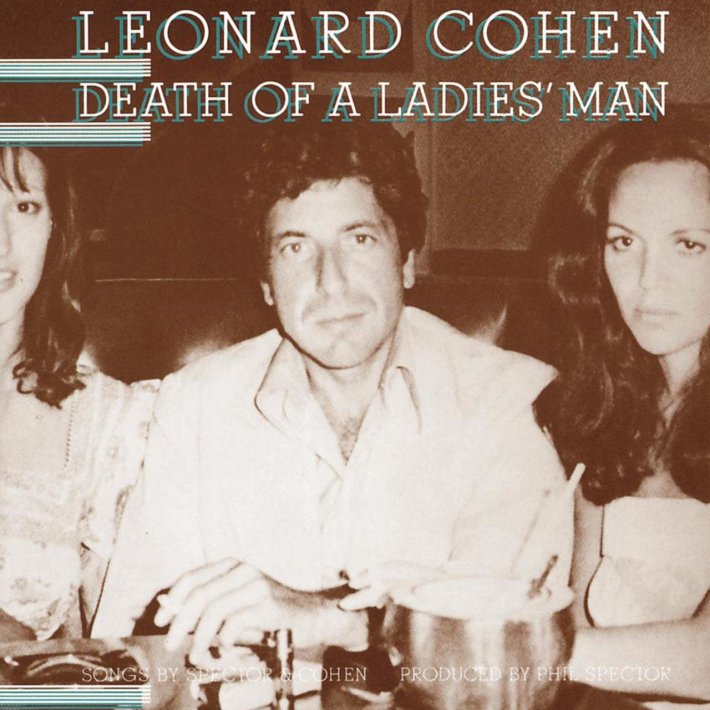
6. Death Of A Ladies' Man (1977)
Rolling Stone called it "Leonard Cohen's doo-wop nightmare." The Toronto Star recommended it to "musical sadists." The New York Times called it "bewildering." Leonard Cohen himself called Death Of A Ladies' Man "a catastrophe," and he has made no secret of the fact that the record represents the most "flipped out," drug-filled period of his career.
I don't have room to write a book-length exegesis of how Death Of A Ladies' Man came to be (though there is one waiting to be written), so here's an overview: 1) Our hero went into the studio to write and record an album titled Songs For Rebecca with producer John Lissauer, then promptly abandoned the project and disappeared. 2) Cohen encountered Phil Spector backstage at a show in LA. The legendary producer invited Cohen to his home, which Cohen remembers being so freezing he had to wear his coat indoors. 3) Spector locked the door -- literally holding Cohen hostage in his cold-ass house -- at which point Cohen suggested, "As long as we are locked up, we might as well write some songs together." 4) The pair spent a whole month writing an album and drinking to oblivion. 5) As soon as they entered the studio in early 1977, Spector's famously unhinged behavior began to take hold. He had guns. He had booze. There were so many session musicians cramming the studio he could barely move. "I was flipped out at the time, and he certainly was flipped out," Cohen later recalled, describing the megalomaniac producer's mental state as "post-Wagnerian" if not "Hitlerian."
The famous story -- first reportedin Ira B. Nadel's biography Various Positions) is that Spector one day brandished a loaded gun at Cohen's throat and said, "I love you, Leonard," to which Cohen meekly responded, "I hope you love me, Phil." What's wild is that these stories are entirely believable given Spector's history -- the guy reportedly fired guns in the studio with John Lennon in 1974 and was decades later convicted of the 2003 murder of Lana Clarkson. (Cohen has been quoted describing him as a "Dr. Jekyll and Mr. Hyde situation" -- he went nuts when he entered the studio.) So what does this have to do with the music? Basically, Spector's lunacy was such that he literally kicked Cohen out of his own album and assumed creative control, drowning out the singer's material in a grotesque fog of sound and orchestration. ("Cohen was actually pushed aside and ignored during the sessions," Nadel writes, while his producer pulled a gun on an unsatisfactory violinist and became "so paranoid about the tapes that he took them home each night with an armed guard" -- mixing the songs with zero input from his star.)
So it's a far cry from Cohen's tasteful folk songs; on the record's lewdest cut, "Don't Go Home With Your Hard-on," the singer literally shouts to be heard over the ruckus of an R&B boogie and dozens of backing vocalists, Bob Dylan and Allen Ginsberg among them. But now for the defense: I love the disastrously received record this unholy partnership created. Spector and Cohen were laughably mismatched -- one a brilliant but megalomaniacal drunk obsessed with grandiosity; the other a brooding songwriter accustomed to spending years refining songs and arrangements -- but their coupling brought us one of the most fascinating albums of the 1970s. Death Of A Ladies' Man is a glorious mess, a distinctly '70s glimpse of hubris and excess. It is also entirely unlike any other record in Cohen's catalog. If it weren't so messy I'd be tempted to rank it even higher, but then the messiness is the point. Put Death Of A Ladies' Man on in polite company and you're guaranteed to arouse some sort of reaction, be it fascination or disgust, which is more than can be said for the drab Side B of Various Positions.
And the songs! The songs are very good. Hell, the one-two-three punch of "Iodine" and "Paper Thin Hotel" and "Memories" are among the greatest songs Cohen ever made, with squealing saxophones and garish string flourishes soundtracking his on-tape meltdown. The raucous "Memories," a personal top-10 Cohen tune, is like doo-wop from hell; the title track, all nine minutes' worth of romantic disillusionment, remains one of his most fascinating epics. And speaking of arousal, Cohen has never been quite so preoccupied with the grittier details of sex (and this is a guy who had already sung about getting head from Janis Joplin). In "Memories," he begs for the sight of a woman's naked body; the title track tells of an orgy in a "many mirrored room"' "I Left A Woman Waiting" contains super romantic imagery about copulating "quick as dogs and truly dead." Yet nothing here is quite as deliriously perverse as "Paper Thin Hotel," in which our singer listens attentively to his ex-lover having sex through a hotel wall. (If Cohen's vocals sound weirdly thin, it's because they might very well be "guide vocals," which he intended to re-record before Spector decided to hold the tapes hostage.)
Death Of A Ladies' Man is a bizarre, tortured, erotic -- even garish -- record. It's not very polite, and for those who know Cohen from folk standards like "Suzanne," its excesses might seem outright offensive. But it's a remarkable document, a woozy, near-psychotic mess of sound and vision remarkably well-suited to the time and the mood. Like a handful of other albums from the era -- Harry Nilsson's Pussy Cats, the Rolling Stones' Goats Head Soup -- Ladies' Man captures '70s decadence and exhaustion with alarming frankness. We all sink to our lowest point some time or another, pushing our ear against a hotel wall to hear an ex getting laid, but rarely does it result in a piece of art as brilliantly grotesque as Death Of A Ladies' Man.
The album was disparaged upon release, but there does now seem to be a small but loyal cult of critical reappraisal, not too different from the one that's sprung up around Neil Young's Trans. One of the best and most rousing defenses I've read is a piece by Tablet writer Liel Leibovitz. In a long essay, Leibovitz concludes that Ladies' Man is "frequently terrible, deeply relevant, and not for one moment boring." He's right. And anyway, if you're not grateful that Death Of A Ladies' Man got made, be grateful that it got made without Leonard Cohen taking a bullet to the throat.
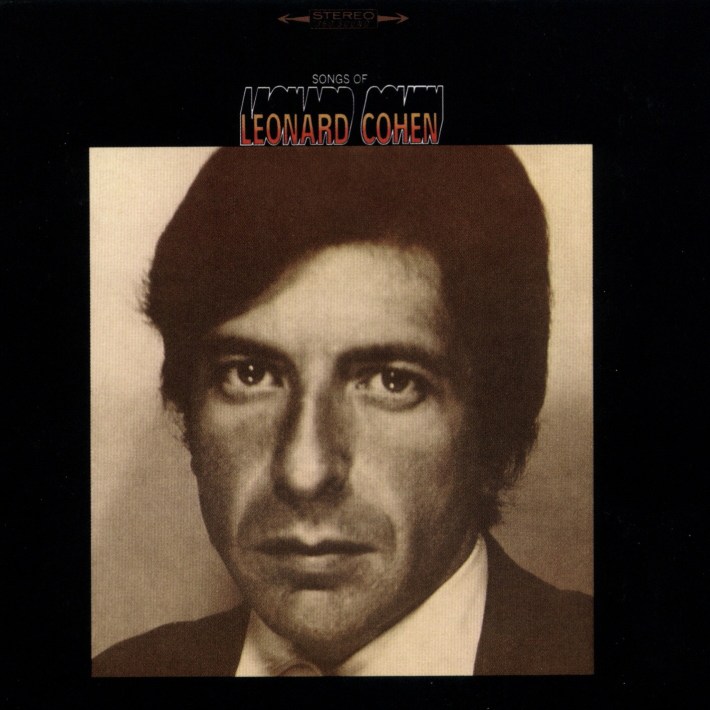
5. Songs Of Leonard Cohen (1967)
When people who know little of Leonard Cohen, who have only a rudimentary knowledge of the songwriter, hear his name evoked -- in conversation, perhaps, or during an awards show -- this is what they probably envision. Not the perverted doo-wop of Death Of A Ladies' Man, certainly not the dinky karaoke beats of Dear Heather. They expect to hear something like "Suzanne" (Cohen's most well-known song until "Hallelujah"), something as pleasant as "Sisters Of Mercy" or as quietly haunting as "One Of Us Cannot Be Wrong." And if that doesn't capture the full breadth of Cohen's stylistic and thematic range, it's still pretty goddamn great.
Songs Of Leonard Cohen is as straightforwardly definitive as its title. While several of the singer's contemporaries started their careers with tentative, middling debuts (Song To A Seagull, for instance, by Cohen's fleeting lover Joni Mitchell), Cohen's vision was remarkably realized from the start. Of course, he was hardly young. The singer was well into his 30s and had already tried his hand as a poet and novelist, to mixed success, by the time Songs Of Leonard Cohen appeared in late 1967. Few considered him a musician, and Cohen himself struggled with uncertainty about his limited voice; performing at the Newport Folk Festival shortly before Songs was recorded, he was said to have been overcome with anxiety and stage fright. (He refused to tour until after Songs From A Room.) But the songs spoke for him. And Songs Of Leonard Cohen became the perfect introduction to Cohen's thin, unorthodox vocals and classical-inspired guitar "chop" (his unusual style of plucking, as heard on "Teachers," "Stranger Song," and later "Avalanche").
The album was recorded in New York with folk-rock maestro John Simon, in a tiny Columbia studio outfitted with not much more than a chair, a mirror, and some incense. The songs reflect that spare aesthetic: There is not a wasted note, nor a gratuitous syllable. Even then, Cohen had a remarkable precision of language in his songs. Look at the record's dual love songs, "Hey, That's No Way to Say Goodbye" and "So Long, Marianne" (a song now imbued with deeper emotion in light of Cohen's 2016 letter to a dying Marianne Ihlen), and how much sadness and longing is conveyed in simple images: the hair upon the pillow "like a sleepy golden storm" or Marianne's spider web "fastening my ankle to a stone." "Suzanne," an evocative paean to platonic travels with friend Suzanne Verdal, is of course the staple. Yet it is not all fluffy love songs: "Stories Of The Street" and "One Of Us Cannot Be Wrong" introduced listeners to Cohen's stormier emotional side. The latter song contains some of the songwriter's most inscrutable verses and concludes in a wailing fit of catharsis -- a neat preview of 1971's heavier Songs of Love and Hate.

4. The Future (1992)
You want it darker? Leonard Cohen never made a record more pointed and despairing than 1992's The Future. In a menacing and husky croak, the Montreal poet namechecks Stalin, demands "crack and anal sex," and proclaims that he's "seen the future, brother / It is murder" -- all in the first minute of the record. Elsewhere, he invokes the Tiananmen Square Massacre, the AIDS crisis ("Democracy"), Charles Manson, and (in two separate tracks) the specter of Satan himself. It's heavy stuff, though with glimmers of hope: Instead of Cohen's sullen mug, the album cover has an image of a heart breaking free from chains with the aid of a hummingbird. (Birds -- on wires or otherwise -- remain a potent theme in Cohen's work.) "There is a crack in everything," the singer intones on the Kabbalah-inspired "Anthem," and "that's how the light gets in." The quote went viral following Cohen's death -- and Trump's victory -- as an expression of hope and grace in the face of the unimaginable.
Using the icy synths of I'm Your Man as a starting point, The Future digs into lengthier song structures, heavier gospel overtones, and more pointedly political subject matter. It's more everything -- this is Cohen's most maximalist production, the drunken revelry of Ladies' Man notwithstanding. The singer recorded in 10 different studios, according to biographer Anthony Reynolds, and the team Cohen assembled "was more akin to a movie production and included both a choir and an orchestra." (Speaking of movies, even Rebecca De Mornay, Cohen's girlfriend at the time, gets a production credit.) It paid off, generating some of the most complex and cinematic musical settings in Cohen's catalog, from the shivering synth loops of "Waiting For The Miracle" (as ominous a song as Cohen has ever done) to the military march of "Democracy."
There are fleeting moments of levity in the form of two R&B covers, which find Cohen pausing his doomsday soothsayer role to try on a dirty-old-man guise ("I don't give a damn about the truth, baby / Except for the naked truth," he growls on "Be For Real"). But the heart of the album lies in searing originals -- the title track, "Waiting For The Miracle," "Democracy," "Anthem" -- delivered with the full force of moral reckoning. Even the uptempo drinking anthem, "Closing Time," has semi-apocalyptic overtones, with references to the devil and Christ and the Holy Spirit. The Future is grand in both scale and design. Nearly every track exceeds the six-minute mark. (I'd argue the only tedious moment is "Light As The Breeze," but the song's dense imagery is nonetheless of fascination to anyone interested in probing the spiritual and sexual planes of Cohen's work.)
Around the time of The Future and its corresponding tour, Cohen's cool cred was unexpectedly restored by a new generation of alt-rock admirers. Once seen as a washed-up folkie, Cohen was suddenly namechecked in a Nirvana song ("Pennyroyal Tea"), covered by R.E.M. and Pixies (both on the scattered I'm Your Fan tribute), and even lampooned on the cover of Ween's The Pod. Then, in 1994, The Future became eternally linked in pop culture with Oliver Stone's Natural Born Killers, which featured three of its songs. Cohen didn't spend very much time basking in the glow of his renewed success. Quite the contrary: He disappeared, spending the rest of the decade in Buddhist seclusion at the Mt. Baldy Zen Center, where he studied under the elderly Zen master Kyozan Joshu Sasaki Roshi.
He remained there for years, not releasing another album of new material for nearly a decade. The extended Buddhist retreat softened the man's worldview, or at least ironed out some of the seething terror. It also made him into even more of an enigma. Cohen had always been a mysterious entity, but during that decade he seemed to fade into pop culture ghosthood, leaving The Future behind as his would-be final masterpiece -- searing, apocalyptic, and as suffused in myth and darkness as the man himself.

3. New Skin For The Old Ceremony (1974)
On the opening track of New Skin For The Old Ceremony, Leonard Cohen's nasally warble rises to an agitated shout. "Is this what you wanted?" he asks, over and over, with trumpet swells and a supple funk backbeat dancing around him. It's the most dynamic composition Cohen had recorded up to that point, and it points the way ahead for the fantastic New Skin For The Old Ceremony, the album where the then-39-year-old songwriter became increasingly restless with his trademark downtempo folk songs. This is the sound of a songwriter at the peak of his powers growing bored with his sound. So he changed it up.
What's interesting about Cohen's discography is how much his style changes album to album depending on choice of producer (Phil Spector's wall of sound, Sharon Robinson's late-night R&B, etc.). For this fourth record, Cohen tapped John Lissauer, a jazz guy who was given total control to bring Cohen's songs to life. The singer played him "Lover Lover Lover" and "There Is A War," lively campfire songs possibly inspired by a trip to Africa, and Lissauer heard strings, mandolins, banjos, chattering congas, raucous singalong choruses. New Skin's songs are markedly shorter than on Love And Hate -- 11 songs in 37 minutes -- and full of flourishes that could not have been realized on his early records, like the honky-tonk piano on "I Tried To Leave You" or the orchestral coda in "Who By Fire." Lyrically, Cohen was moving away from story-songs and toward more playful, repetition-based verse ("There Is A War," "Who By Fire"). On New Skin, he is obsessed with the themes that would thread through his career: spirituality, eroticism, isolation, loss, eroticism, war, eroticism. And even more sex. Cohen could dazzle you with biblical allusions, but he also loved to see you naked over there, especially from the back.
There are no songs here as recognizable as "Suzanne" or "Hallelujah." But there is not a single weak track either. New Skin For The Old Ceremony is packed with live staples and fan favorites of brilliant, unquestionable quality: "Why By Fire," "Field Commander Cohen," "Leaving Green Sleeves," and "Chelsea Hotel #2" -- inspired by a Jewish prayer for the High Holidays, a brief stint singing for the Israeli army, a 15th-century folk song, and a sexual encounter with Janis Joplin, respectively. (Cohen regretted revealing that "Chelsea Hotel" was written about Joplin, but the song solidified the affair as an immortal piece of the Cohen legend. After his death last week, fans in New York naturally gathered in mourning at the Hotel Chelsea.)
With Songs Of Love And Hate, Cohen made his first masterpiece. With New Skin and its polarizing follow-up, he made clear that he had no interest in repeating himself.
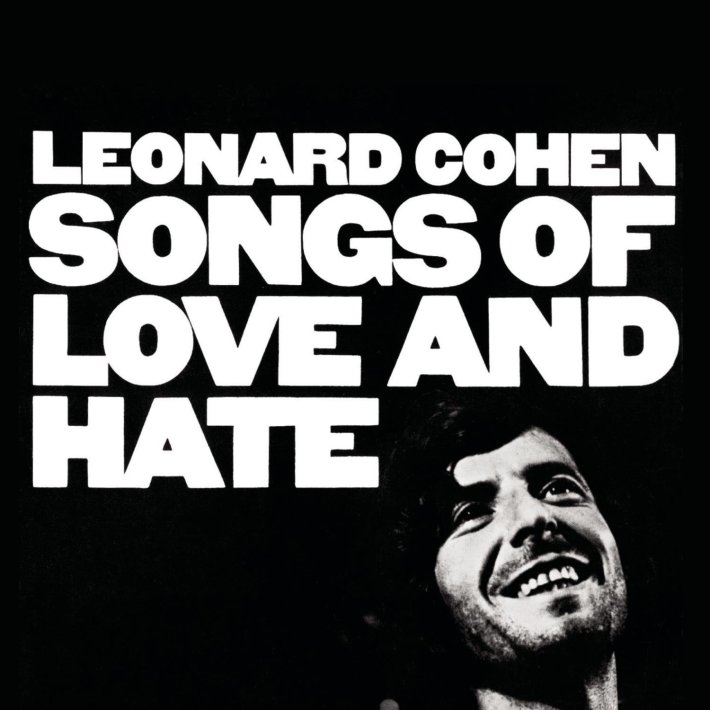
2. Songs Of Love And Hate (1971)
Songs Of Love And Hate is the first unimpeachable masterpiece in Leonard Cohen's discography, and it nearly did not exist. The story is that Cohen was dismayed by the tepid response to the Songs From A Room tour and wanted to give up. He proposed releasing two live albums instead of new material. His producer balked at that idea, so instead Cohen went into the studio and recorded a masterpiece of unrelenting intensity.
When you step into Songs Of Love And Hate, it covers up your soul. Every track here (there are just eight of them) radiates hot blasts of despair, isolation, rage, longing, and -- yes -- love and hate. Cohen has amassed a reputation for making "music to slit your wrists by," and it seems reasonable to assume that this reputation solidified itself here. In fact, "Dress Rehearsal Rag" is literally about slitting your wrists (or at least considering it), with Cohen unleashing long verses about a "golden boy" staring down his desperation in the mirror as he "unwrap[s] a stainless steel razor blade." Equally chilling is "Joan Of Arc," in which Cohen envisions in brutal detail the immolation of the titular French heroine. For new listeners wondering why Cohen is worshipped by goth icons like Trent Reznor and Nick Cave, start here. (Cave, who covered "Avalanche" on From Her To Eternity and paid tribute to Cohen after his death, has described Songs as an album "that seethes and spits with a kind of violence unlike any other record ever made.")
Much of the discussion about Songs Of Love And Hate focuses on the lyrics -- understandably so -- which obscures the fact that the arrangements are both understated and perfect. Texture for texture, there is nothing on the first two LPs that matches the controlled gloom of "Avalanche." Credit is owed to ex-Bob Dylan producer Bob Johnston, who helped strip Cohen's songs down to their starkest essence. (The sole uptempo tune is a demented boogie called "Diamonds In The Mine," which features disturbing imagery involving Charles Manson and Christians being eaten by lions. It might be Cohen's single bitterest vocal performance; by the song's end, his singing is a harrowing yelp.) So the music is sparse, but not skeletal or boringly so. Strings coil in the background, adding dramatic weight to songs like "Last Year's Man" and "Love Calls You By Your Name." And the mix is full of intriguing little quirks, like the children's choir on "Last Year's Man" or the fading murmurs of backing vocals on "Famous Blue Raincoat," Cohen's haunting epistolary masterpiece.
Glancing through Cohen's discography, his albums often group together in threes: there is the mid- /late-'70s decadence trilogy (New Skin/Ladies' Man/Recent Songs), the mid-career return to prominence (Various Positions/I'm Your Man/Future), then of course the late-career surprises (Old Ideas/Popular Problems/You Want It Darker). Songs Of Love And Hate surely fits into Cohen's trio of early folk records, but it also stands on its own, an album of such towering darkness and mystery that it gave its creator a reputation for gloom he could never shake.
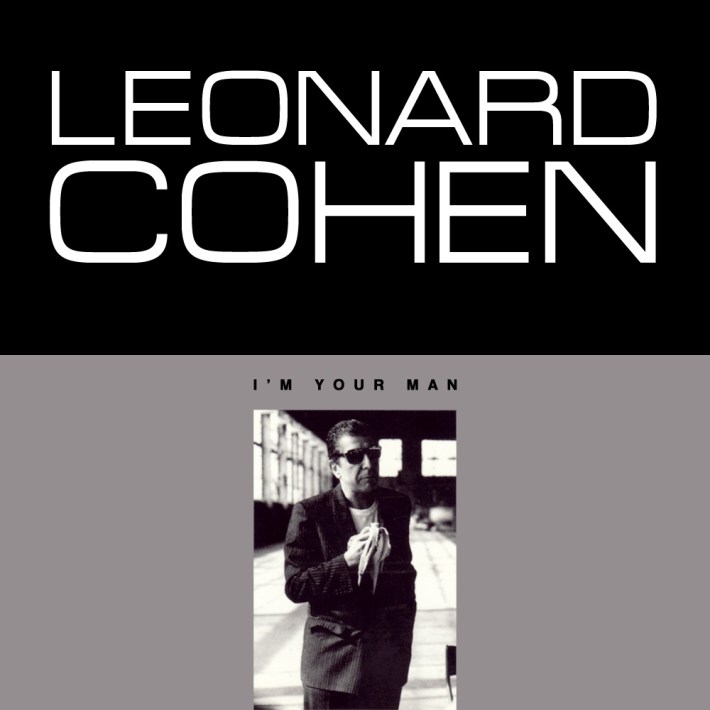
1. I'm Your Man (1988)
"Dylan blew everybody's mind," Allen Ginsberg said, "except Leonard's." Well, Dylan went electric. But Cohen went synth-pop. All the way synth-pop -- play the opening bars of "First We Take Manhattan" for someone who's been in a coma since 1987 and they might easily mistake it for, I don't know, a very dark New Order track. And amazingly, spectacularly -- contrary to the '80s trend of folk-rockers fumbling with synthesizers to disastrous effect -- the thing clicked. Cohen's big gamble turned out to be his boldest reinvention and his greatest album.
Cohen had long dabbled in different stylistic guises, but never to such dazzling effect, and all within the confines of a 40-minute album: the soft-pop glaze of "Ain't No Cure For Love," the jittery paranoia of "Jazz Police," the eastern European flourishes of "I'm Your Man." At 53, Cohen tossed out his acoustic guitars and his turtleneck sweaters and blazed a new fashion of Armani suits and sunglasses (has anyone ever looked this dapper eating a banana?) sleek enough to match the radical overhaul of his sound. The sound is one of slick, meticulous Europop: drum machines, synthesizers, synclaviers, sequencers -- Cohen had flirted with this stuff on Various Positions, but here he dives all the way in. He even does schmaltz better than the career crooners: "Ain't No Cure For Love" is AOR sleaze delivered with all the biblical urgency Cohen's army of angelic singers can muster.
The glossy new sound formed the perfect setting for Cohen's deepening voice, which was darker and huskier than it had ever been. What might have ended another singer's career became a blessing; "I could at last deliver the songs with the authority and intensity required," the artist once reflected. The vocal performances are full of little, revelatory moments, like the sinister cackle in "First We Take Manhattan" or Jennifer Warnes' harmonies during the final verse of "Take This Waltz." And the lyrics are some of Cohen's best ever -- no, no, scratch that: They are his best ever. In "First We Take Manhattan," Cohen slips inside the mind of a terrorist with ink-black wit. The mantra-like "Everybody Knows," with its bleak proclamations on the AIDS crisis and racial injustice, was exactly the excoriation the Reagan decade deserved, scraping away at the seedy underbelly of '80s glitz and glamour. The title track, much like another deceptively wedding-ready hit from the era, R.E.M.'s "The One I Love," was commonly taken to be a love song, but really it is something more sinister -- a song of obsession, of devotion stretched to the point of creepy self-abasement. (As Cohen had sang many years earlier, "I guess you call this love / I call it service.") The meta-commentary of "Tower Of Song," recorded with little more than a toy synthesizer, features Cohen's sharpest musings on his own craft: "I said to Hank Williams, 'How lonely does it get?' / Hank Williams hasn't answered yet." And God only knows what "Jazz Police" is about, but it's hysterical ("Guys like me are mad for turtle meat"? What?).
With its heavy synths and glistening saxophone, I'm Your Man stands as a symbol of the '80s decade itself: glossy and bright, but with a dark underbelly of despair and corruption. The album revitalized Cohen's career after a shaky decade, but its nouveau chic vibe hardly seemed to brighten his mood: The album opens with a terrorist's manifesto and closes with the charge that "the rich have got their channels in the bedrooms of the poor." Cohen was bitterly unhappy during this period, "bedeviled by depression, apathy, and indiscipline," Harvey Kubernik reports in Leonard Cohen: Everybody Knows. His most apocalyptic work yet was just around the corner, but the man has never quite topped this 1988 masterpiece. It set the template for the rest of his career.
